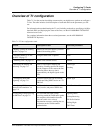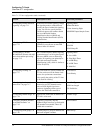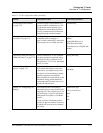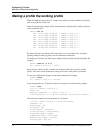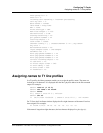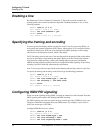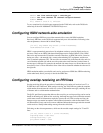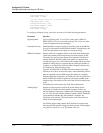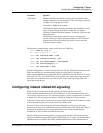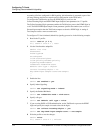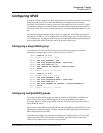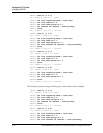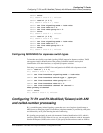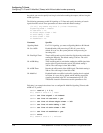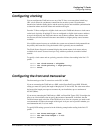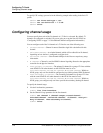
Configuring T1 Cards
Configuring inband robbed-bit signaling
APX 8000/MAX TNT/DSLTNT Physical Interface Configuration Guide Preliminary May 9, 2000 7-11
The following example enables overlap receiving on an E1 PRI line:
admin> read e1 {1 16 7}
E1/{ shelf-1 slot-16 7 } read
admin> set signaling-mode = isdn
admin> set overlap-receiving = yes
admin> set pri-prefix-number = 049-228-555
admin> set trailing-digits = 4
admin> set t302-timer = 5000
With this configuration, if a caller dials 049-228-555-1212, the TAOS unit matches the prefix,
finds four trailing digits, and immediately begins processing the call. It might use
called-number authentication (if applicable) before establishing a session. Similarly, if a local
caller dials 555-1212, the TAOS unit fails the first match, tries without the country code and
fails again, tries without the area code, and succeeds. It then finds four trailing digits and
begins processing the call.
Configuring inband robbed-bit signaling
When the line is configured for inband signaling, the TAOS unit does not receive
bearer-capability information from the carrier. Therefore, it cannot determine when a call is
voice-service or digital-service. For call-routing purposes, all calls in inband lines are treated
as digital calls. You can change this default by setting the Default-Call-Type parameter.
Trunk-side T1 lines must use wink-start call control, which is the default. It enables the switch
to seize the trunk by going off hook after receiving a 200ms wink.
Line-side T1 lines must use loop-start call control. Regardless of the type of call control
mechanism you choose, the switch must not forward dialed digits to the TAOS unit. Doing so
disrupts the handshaking process during multichannel calls. Lucent recommends that
channelized T1 lines be trunk side rather than line side.
On lines configured for inband signaling, you must specify that the TAOS unit process the
calling and called dual-tone multifrequency (DTMF) digits if you want to use Dialed Number
Identification Service (DNIS) and Calling Number Identification (CLID) authentication or
T302-Timer Number of milliseconds that the system waits for additional called
number information for an incoming call. The valid range is from 100
to 30000 (.10 second and 30 seconds).
The default is 10000 (0.10 seconds).
The TAOS unit begins collecting the trailing digit information, and for
each call Setup message from the switch that does not include
“Sending Complete Information Element,” it starts the T302 timer (the
Setup Ack timer).
The TAOS unit stops the timer when it receives a message that
includes “Sending Complete Information Element.” The TAOS unit
assumes there are no more trailing digit digits to collect when the
T302 timer stops or expires.
Parameter Specifies



